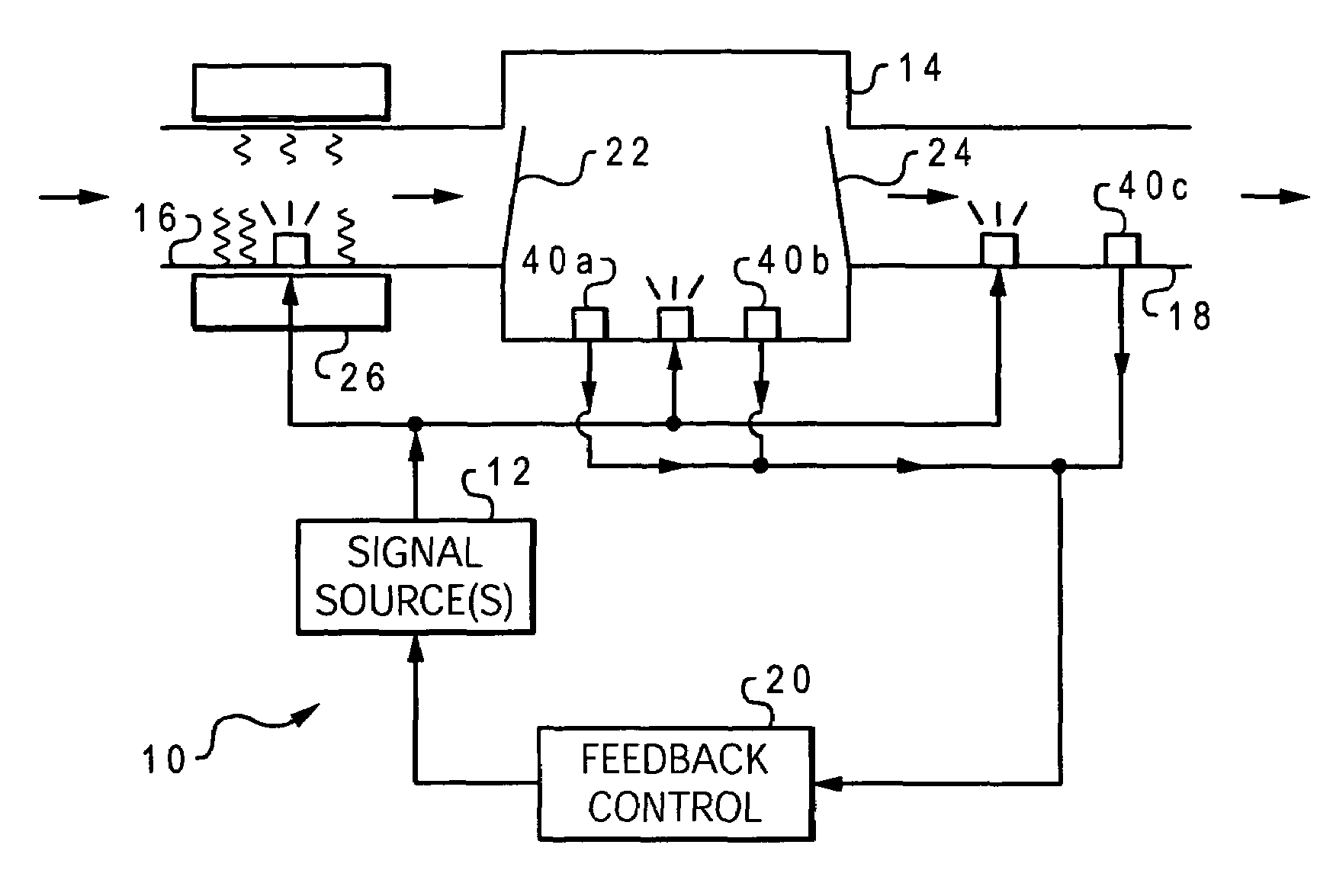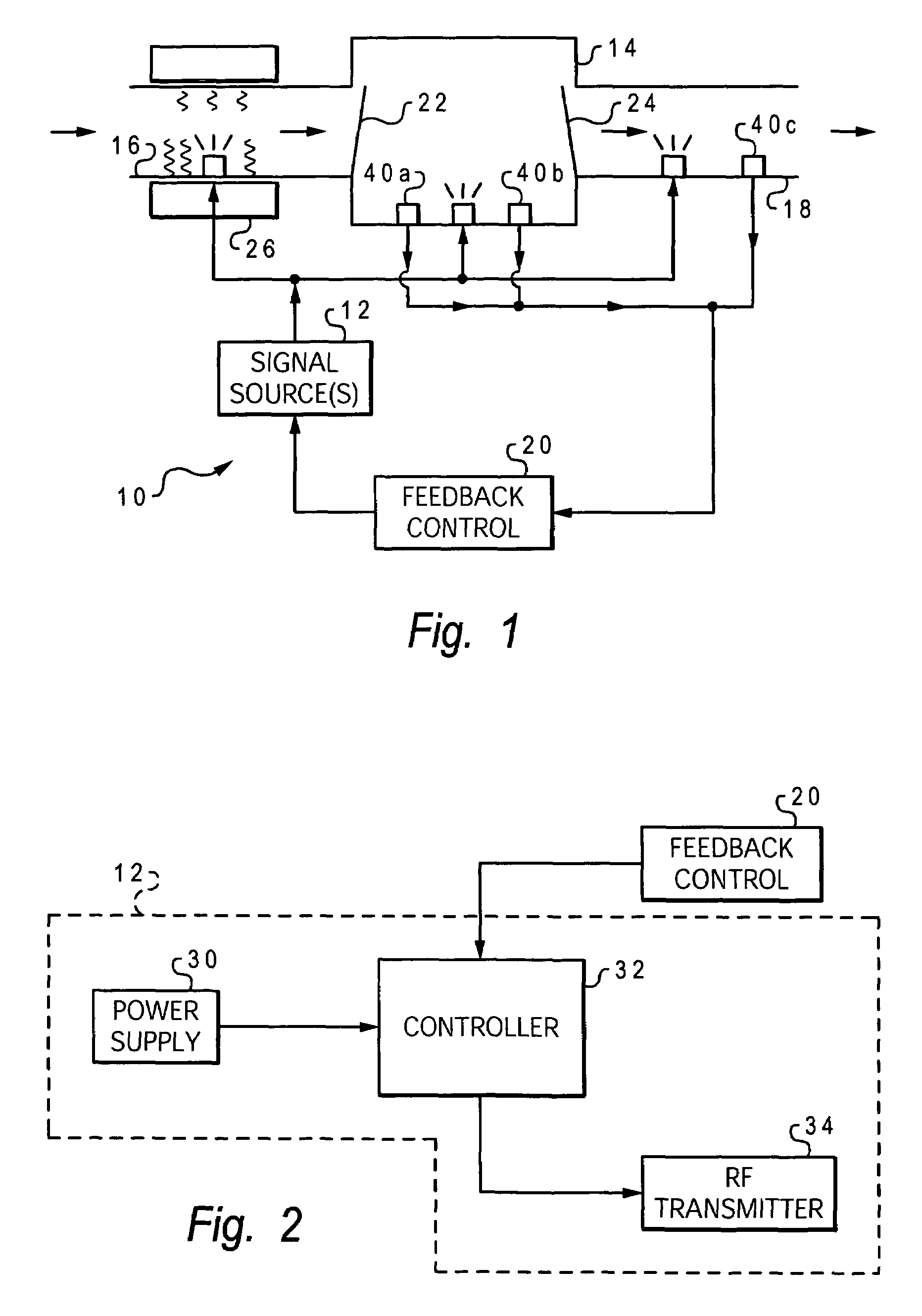Nuclear resonance applications for enhanced combustion
a nuclear resonance and enhanced combustion technology, applied in the field of exothermic combustion, can solve the problems of high nox levels, high level of nox, and large amount of time, effort and capital investmen
- Summary
- Abstract
- Description
- Claims
- Application Information
AI Technical Summary
Benefits of technology
Problems solved by technology
Method used
Image
Examples
Embodiment Construction
)
[0031]With reference now to the figures, and in particular with reference to FIG. 1, there is depicted one embodiment 10 of a generalized combustion apparatus constructed in accordance with the present invention. Combustion apparatus 10 is generally comprised of a nuclear resonance stimulation source 12, a combustion chamber 14, an intake port 16, an exhaust port 18, and a feedback control unit 20. As used herein, the term “combustion chamber” denotes the physical area of an overall combustion system where combustion takes place. It is not to be meant to be construed in the limiting sense of an enclosed space. Various combustion systems will encompass combustion chambers that are both periodically enclosed from the intake and exhaust ports during their function (internal combustion) and some that are continuously open to these ports. As explained in further detail below, the present invention is applicable to a wide variety of combustion applications, e.g., furnaces, turbines, moto...
PUM
 Login to View More
Login to View More Abstract
Description
Claims
Application Information
 Login to View More
Login to View More - R&D
- Intellectual Property
- Life Sciences
- Materials
- Tech Scout
- Unparalleled Data Quality
- Higher Quality Content
- 60% Fewer Hallucinations
Browse by: Latest US Patents, China's latest patents, Technical Efficacy Thesaurus, Application Domain, Technology Topic, Popular Technical Reports.
© 2025 PatSnap. All rights reserved.Legal|Privacy policy|Modern Slavery Act Transparency Statement|Sitemap|About US| Contact US: help@patsnap.com



